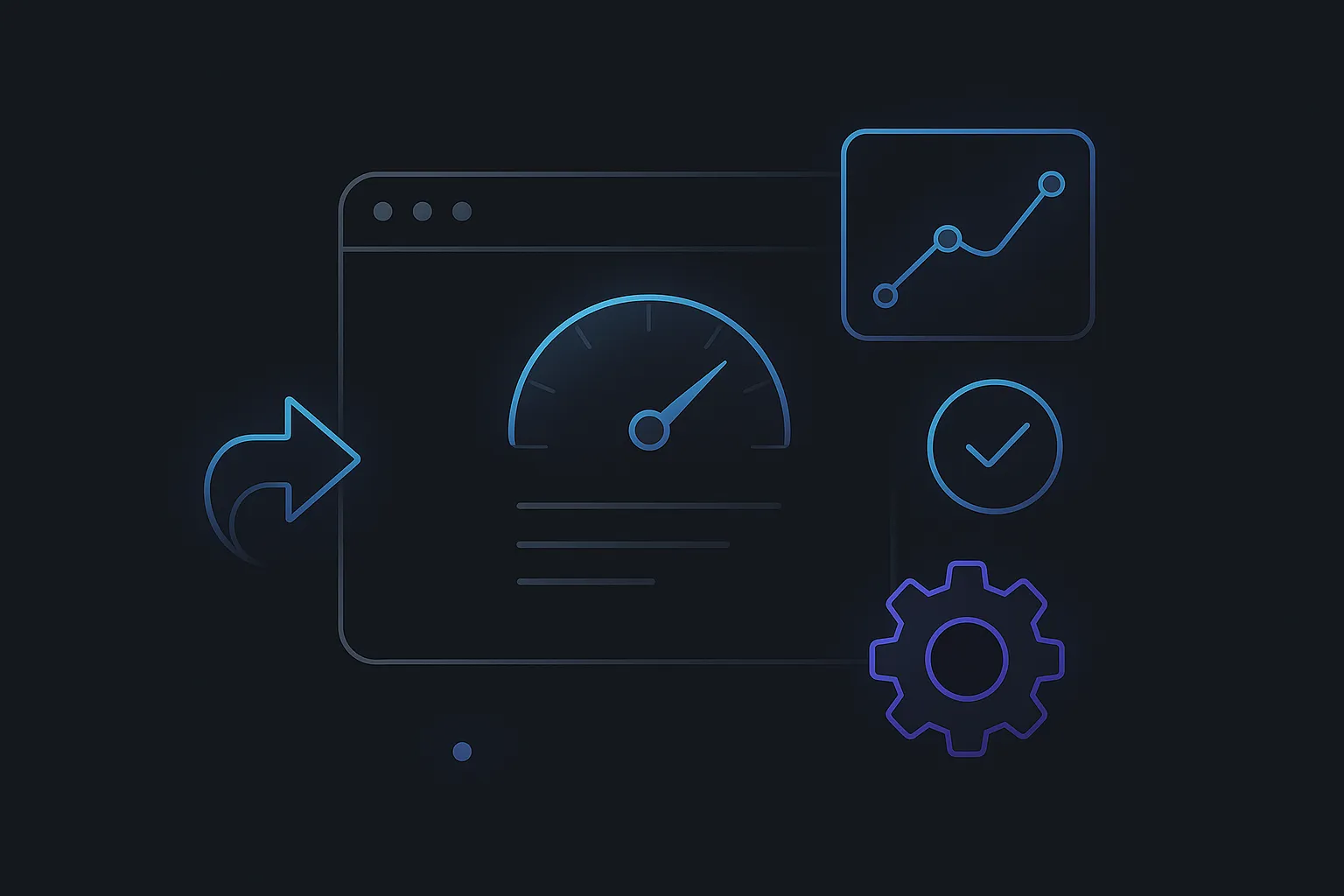Have you ever clicked on a website and then left because it took too long to load? I've been there as a user and as the owner of BYBOWU, a US-based IT studio that makes modern web and mobile apps. Google's Core Web Vitals, which include Largest Contentful Paint (LCP), First Input Delay (FID), and Cumulative Layout Shift (CLS), will be very important for your website's performance and SEO rankings in 2025. When you optimize for these, you're not just using tech jargon; you're making your visitors happy and making more money. Let's look at some real ways to make your website better for Core Web Vitals and why this is a big deal for business owners and startup founders.
Why is this important? A website that loads quickly and smoothly can make the difference between getting a lead and missing out. Let's work together to fix this problem by taking steps that are right for the trends of 2025.
What Are Core Web Vitals and Why Do You Need to Know?
Google uses Core Web Vitals to see how well users are experiencing their site. LCP checks how quickly your main content loads, FID checks how quickly your site responds to user input, and CLS checks how stable your site's visuals are. These metrics are very important for SEO in 2025 because Google gives higher rankings to sites that provide smooth experiences, especially on mobile devices.
If your site takes a long time to load or moves around without warning, people will leave. Clients have doubled their conversion rates at BYBOWU just by making sure their websites work well. If your Core Web Vitals aren't good, your rankings could drop, your leads could dry up, and your audience could get angry. Let's make that better.
Making the Largest Contentful Paint (LCP) faster
LCP tells you how quickly the main content of your site, like images or text, loads. To stay in Google's good graces, try to get your page to load in less than 2.5 seconds in 2025. Slow LCP hurts SEO rankings and makes users less likely to trust you, especially on mobile.
Begin with how well the server works. To cut down on latency, use a content delivery network (CDN). Use tools like WebP to compress images without losing quality. This will help you get the most out of your images. We use Next.js at BYBOWU to speed up server-side rendering, which lowers LCP times for our clients' sites.
Pro tip: Cut down on render-blocking resources like big CSS or JavaScript files. This may sound hard, but it's an easy fix that makes the website faster and makes users happier.
Increasing First Input Delay (FID) for better responsiveness
FID keeps track of how quickly your site responds to user actions, such as clicking a button. A good FID is less than 100 milliseconds. With users expecting instant feedback in 2025, a slow FID can hurt your conversions.
Deferring scripts that aren't necessary can help JavaScript run faster. To keep your site fast, break up long tasks. At BYBOWU, we focus on writing lightweight code for our React Native apps so that interactions go smoothly. The same logic applies to websites.
Take a look at our services to see how we handle FID for clients to make sure their sites are easy to use and responsive.
To keep things stable, you should keep Cumulative Layout Shift (CLS) to a minimum.
CLS checks for unexpected changes in layout, like when ads or images pop up and move things around. For 2025, a CLS score below 0.1 is best. High CLS makes users angry and tells Google that the site isn't good.
To stop reflows, always give the size of images and videos. Use CSS aspect ratios and stay away from content that is dynamically added without placeholders. We use Laravel's clean backend logic to help our clients stabilize their layouts at BYBOWU. This keeps CLS low.

A Step-by-Step Guide to Making Your Website Better for Core Web Vitals
Are you ready to do something? This is a useful plan for making your website work better:
- Check your site: You can use Google's PageSpeed Insights to find out what LCP, FID, and CLS are.
- Improve Server Response: For faster load times, upgrade your hosting or use a CDN.
- Compress Assets: For LCP gains, make images smaller and CSS and JavaScript smaller.
- Make Interactivity a Priority: Delay scripts that aren't necessary to improve FID.
- Layouts that are stable: Give media clear sizes to lower CLS.
- Check the performance of your mobile device: Make sure your site looks great on mobile devices.
If you follow these steps, your site will become a powerful tool that is easy to use. Need help? Our portfolio shows how we've improved clients' sites to get measurable results. Our portfolio shows how we've improved clients' sites to get real results.
Why You Have to Optimize for Mobile in 2025
Core Web Vitals are even more important now that mobile traffic is so high. Google's mobile-first indexing means that how well your site works on mobile devices affects SEO. Slow loading times on mobile devices or interactions that are hard to use can ruin your attempts to get leads.
We use React Native and Next.js at BYBOWU to make mobile-friendly sites that do well on Core Web Vitals. By putting mobile site performance first, I've seen startups go from being unknown to being at the top of the list. It's a small change that will pay off big.
Things You Shouldn't Do When Optimizing Core Web Vitals
Don't add too many plugins to your site; each one makes it heavier and slows down LCP. Another mistake is to ignore mobile users. In 2025, optimizing only for desktop users won't be enough. And don't forget to test—making assumptions about how well something will work can lead to expensive mistakes.
I've been there, thinking a site "looked fine" only to find out that CLS problems were hurting conversions. Regular audits and feedback from users are very helpful. We at BYBOWU do thorough checks to find these problems early.
Tools and Resources to Learn Core Web Vitals
PageSpeed Insights and Lighthouse from Google are the best tools for measuring Core Web Vitals. GTmetrix gives you more information about how long it takes to load. If you want to see how your performance is changing in real time, try using tools like Google Search Console.
We use these tools in our work at BYBOWU to make sure that every site we build, whether it's with Laravel or AI-powered solutions, meets 2025 standards. These tools give you the power to stay ahead of the game.
Final Thoughts: You Can Shape the Future of Your Website
Optimizing for Core Web Vitals isn't just about making Google happy; it's also about making your users happy and helping your business grow. A website that loads quickly, works well, and is stable builds trust, improves SEO, and turns visitors into leads. At BYBOWU, we are always coming up with new ideas using the latest technology. We know from experience how these metrics can change a digital presence.
Are you ready to make Core Web Vitals better? Make an appointment for a free performance review with us! You can get in touch with us by going to our contact page or sending an email to [email protected]. In 2025, let's turn your website into a money-making machine.





Comments
Be the first to comment.